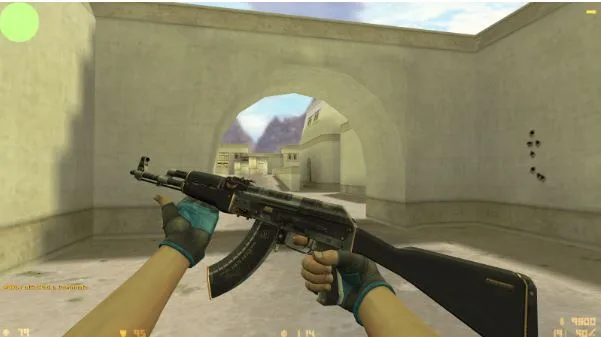Formats That Win: Short Reels, Long Plays, and Live Streams for Fast Growth
The content game has rules nobody wrote down, yet everyone feels them. Creators exploding overnight aren’t just lucky – they’ve tapped into something electric, something alive in the algorithm’s hungry heart. They’re digital alchemists, turning seconds of attention into gold.
What’s beautiful and terrifying is how growth isn’t about screaming into every void anymore. It’s this intricate ballet between format and platform, a dance where nobody knows all the steps but everyone’s moving anyway.
Short-Form Content: The Gateway Drug
Fifteen seconds to capture a human soul. That’s the miracle and curse of short-form content. TikTok, Instagram Reels, YouTube Shorts – they’ve turned us all into hummingbirds, hovering frantically between digital flowers, sipping micro-moments of joy, shock, inspiration.
Here’s what breaks my brain: short-form isn’t actually about brevity. It’s about compression. Like forcing a symphony through a keyhole. Every frame carries the weight of dreams. The hook doesn’t just matter – it’s the difference between invisibility and virality. Those first three seconds? They’re more valuable than gold, than bitcoin, than whatever we’re supposed to value these days.
Watch enough viral shorts and you start seeing the matrix. They promise transformation with the confidence of late-night infomercials. They dangle curiosity like fishermen, knowing we’re all fish. “Wait for the end” shouldn’t work, but it does, and we hate that we love it. These aren’t videos anymore – they’re psychological experiments we’ve all agreed to participate in.
The math of virality feels like dark magic. Watch time percentage becomes this holy metric. A fifteen-second video watched completely apparently matters more to the algorithm than a minute-long masterpiece abandoned halfway. It’s heartbreaking and hilarious. Quality bowing to completion rates. Art surrendering to analytics.
Satisfying visuals hypnotize us. Unexpected reveals make our neurons dance. Relatable struggles unite strangers across continents. The same emotional triggers, dressed in different costumes, performing the same play night after night. And we never get tired of it. That’s the beautiful tragedy.
Long-Form Content: Building Empires
YouTube did something nobody expected – it made us patient again. Eight minutes stretched to twenty, then ballooned into two-hour epics. Attention spans didn’t shrink; they split personality. We became content werewolves – either wanting snacks or feasts, nothing in between.
Long-form content builds love affairs, not one-night stands. Short-form is the wink across the bar; long-form is the three-hour conversation that makes you forget time exists. When someone gives you forty minutes of their life, that’s not viewing. That’s trust. That’s choosing you over everything else screaming for attention.
The creator sacrifice here feels almost religious. Research becoming obsession. Scripts growing like living things. Editing sessions stretching into dawn, eyes burning, wondering if anyone will even watch. Long-form content eats time like a starving beast. But when it works? The algorithm falls in love right back. YouTube’s recommendation engine becomes your biggest cheerleader, pushing your content like a proud parent.
Creators who thrive here aren’t just making videos – they’re crafting experiences. They understand rhythm like musicians understand breath. The intro that grabs you by the collar. The middle that won’t let go. The ending that leaves you hungry and satisfied simultaneously. It’s not content creation anymore; it’s emotional architecture.
Complex ideas finally have room to spread their wings here. Educational journeys that actually educate. Personality-driven sagas where parasocial relationships bloom like strange flowers. You can’t explain the universe in thirty seconds. You can’t fall in friendship-love with someone in bite-sized chunks. Long-form gives ideas the gift of time.
Live Streaming: The Authenticity Machine
Live streaming is beautiful chaos, like jazz improvisation meets public therapy. No safety net. No delete button. Just raw humanity broadcasting its messy glory to whoever shows up. It’s terrifying. It’s intoxicating. It’s the most honest format we have.
The magic isn’t in perfection – it’s in the glorious disasters. Viewers show up for the possibility of witnessing something real. The coffee spilled on keyboards. The cats walking across cameras. The genuine laughter, the real tears, the moments that remind us there’s an actual human behind the username. We’re all so starved for authenticity that we’ll watch someone do nothing for hours just to feel less alone.
Each platform treats live streaming like a different flavor of chaos. Twitch built its kingdom on gaming and somehow became therapy for millions. Instagram Live feels like sneaking into someone’s diary. YouTube Live can’t decide what it wants to be, and that’s perfect. TikTok Live? It’s gen-z energy turned up to eleven, beautiful and terrifying and absolutely unhinged.
The weird truth about consistency in live streaming? Showing up matters more than showing off. The streamer who appears every Tuesday at 7 PM, even with terrible audio, builds stronger bonds than the one with professional setup who streams “whenever.” Viewers aren’t just watching – they’re attending rituals, digital congregations where everybody knows your username.
Money flows strangely here. Super Chats and donations aren’t really about content. They’re about connection, about being seen. Someone pays five dollars not for entertainment but for the streamer to say their name, to exist for three seconds in someone else’s world. It’s capitalism mixed with loneliness, creating something weirdly beautiful.
Cross-Format Strategy: The Real Secret
Single-format creators are playing poker with half a deck. The magic happens when you’re everywhere but nowhere, present but not desperate, creating ecosystems instead of just content.
Watch the masters work. A two-hour stream becomes this content cornucopia – fifteen shorts, three long-form videos, dozens of posts. It’s not creation; it’s resurrection. The same moment living multiple lives across platforms. Live streams become laboratories. Successful experiments become shorts. Viral shorts become investigations. It’s content evolution at light speed.
Take someone brilliant like a Casino King content creator – they’re streaming poker sessions that feel like watching a thriller movie, cutting highlights that make gambling look like poetry, then producing strategy guides that actually teach something valuable. Each format serves different hungers. Live streams for adrenaline junkies. Shorts for dopamine seekers. Long-form for knowledge hunters. Same creator, different costumes, all authentic.
Platform-native features matter in ways that feel unfair. Instagram Reels using trending audio somehow outperform superior TikToks. YouTube Shorts created in-app get algorithmic hugs. It’s like each platform wants content that smells like home. Imported content feels like immigrants – welcomed but never quite native.
The Algorithm Dance
Every platform’s algorithm has its own personality disorder. TikTok rewards chaos with more chaos. YouTube wants consistency like a needy partner. Instagram craves engagement like a popularity-obsessed teenager.
These algorithmic personalities determine everything. The same video might become TikTok famous while YouTube ignores it completely. Different platforms reading different love languages. TikTok offers overnight fame that might vanish by morning. YouTube builds slowly, like sedimentary rock, but lasts longer. Instagram keeps you connected to people who already love you but rarely introduces you to strangers.
Timing becomes this mystical science nobody’s mastered. Peak hours mean nothing if your audience is nocturnal. Gaming channels thriving at 3 AM because their viewers are insomniacs and Australians. The best time to post is whenever your specific humans are feeling vulnerable to your specific magic.
The Human Element
Here’s what nobody talks about at creator conferences: authenticity doesn’t scale. The more you optimize, the more you become a beautiful robot. Creators live in this constant tension between what feeds the algorithm and what feeds the soul.
The ones who survive and thrive? They’re not fighting the machine or becoming it. They’re finding ways to remain human inside the mechanism. Learning the rules like learning a language, then writing poetry with it. It’s not classical music with its rigid structures. It’s jazz – knowing the changes but playing with feeling.
Burnout stalks every format like a patient predator. Short-form creators collapse under daily posting pressure. Long-form creators emerge from editing caves vitamin-D deficient and questioning reality. Live streamers perform emotional labor until they forget where the performance ends and they begin. Success through one format might be the exact thing that destroys you.
Growth Happens in Gaps
The fastest growth belongs to gap-finders, not gap-creators. They’re digital archaeologists discovering underserved niches, emerging platforms, format innovations everyone else thinks are stupid until they’re not.
Early adopters don’t just win – they win absurdly. First-wave TikTokers. YouTube Shorts pioneers. The ones who jumped on Twitter Spaces before it was cool (is it cool yet?). By the time the crowd arrives, the gold’s been mined. The real treasure? Whatever weird platform launches tomorrow that everyone’s mocking today.
Growth mathematics in content creation defies logic. Zero to thousand followers feels like pushing boulder uphill. Thousand to ten thousand? Somehow the boulder gets lighter. Ten thousand to hundred thousand? Sometimes the boulder starts rolling itself. Success breeding success. Algorithms coronating their chosen ones. The rich getting richer, but in likes and follows instead of dollars.
The landscape won’t stop shifting. Today’s TikTok is tomorrow’s Vine. Stories conquered the world until they became wallpaper. Shorts appeared from nowhere like digital mushrooms after rain. The only constant? Everything changes. Creators who surf chaos instead of fighting it seem to thrive.
Nobody really knows what works until it’s already working. The map keeps redrawing itself while we’re still trying to read it.




